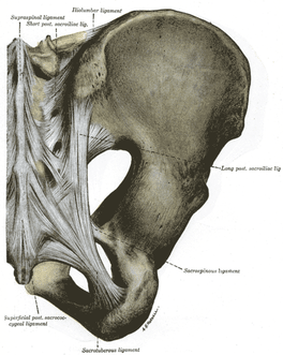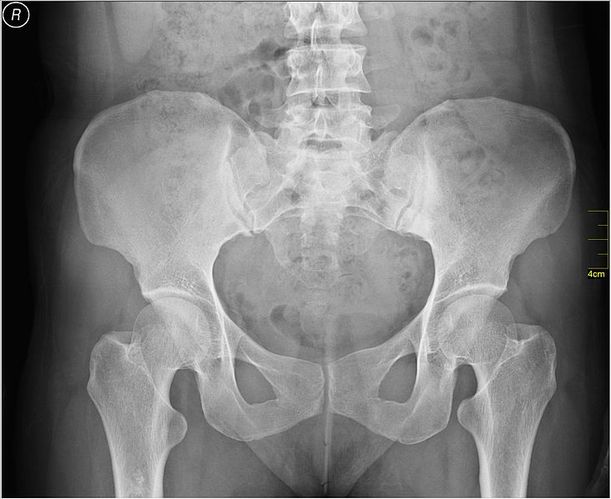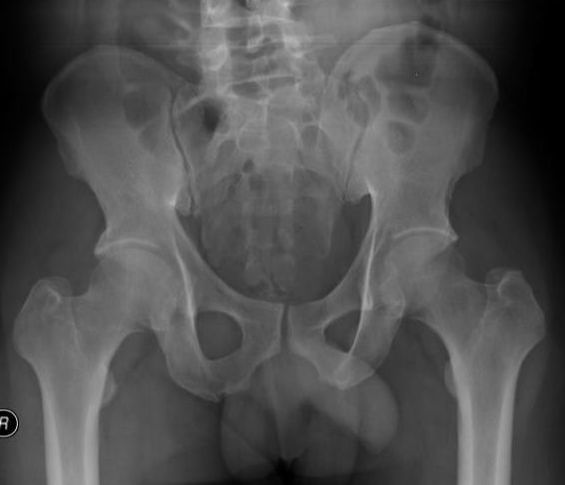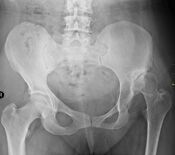I’ve heard it about a million times in my twenty-five plus years of treating patients. “My sackariliyack is killin me doc! Can ya fix it?” If any of you have ever experienced a sacroiliac problem, you know all too well just how miserable it can be. And yes, contrary to what you may have experienced of been told, most of the time sacroiliac problems can be effectively dealt with without DANGEROUS AND DEGENERATIVE INJECTIONS or other offerings from the “BIG FIVE” class of medications. But it’s not always as easy as a few CHIROPRACTIC ADJUSTMENTS. In many cases, TISSUE REMODELING is a must if you don’t want to make visit after visit after visit to someone’s clinic.
The Sacroiliac Joint is just that —- an articulation between the sacrum (tailbone) and the illiacus / illium (the bones you put your hands on when you put your hands on your “hips”), which looks like an earthquake fault on either side of the Sacrum. When the SI becomes dysfunctional, the end result is usually local pain (pain as the SI joint). However, because such a huge percentage of the body’s muscles attach to the pelvic girdle, it’s not uncommon to get an array of symptoms that can be confusing because they are distant to the sacroiliac.
If you stand up and feel at your belt line just above and lateral to the very tip top of the crack of your rear end, you will notice a bony bump on either side. These are the Sacroiliac Joints (SI’s), and the bony bumps are called the PSIS’s (Posterior Superior Illiac Spine’s). Sacroiliac Joints are incredibly strong because they are held together with lots and lots of heavy duty ligaments that cover both the outside of the joint, front and back, as well as the inside of the joint. Because of the great number of ligaments, sprains and strains of the SI are common.
Pictured below are the ligaments that cover the SI Joints. The huge ligament at the lower portion of the sacrum (the sacrotuberous ligament that runs from the sacrum to the ischial tuberosity or “butt bone” / sits bone) is so strong that in over 50% of the population there are actually large muscle groups that anchor themselves to it — namely the long head of the hamstring muscle. This means that chronic hamstring problems can contribute to chronic pelvis or sacroiliac problems and vice versa.
RIGHT PELVIS: FRONT VIEW  | RIGHT PELVIS: BACK VIEW  |
Although most people cannot feel it, the sacroiliac joints have about 3-7 degrees of movement in them. Anything which causes the sacroiliac joints to move either too much or too little tends to cause an irritation / inflammation of the joint called “sacroiliitis”. People who are experiencing mechanical dysfunctions of the SI Joint will typically have a range of symptoms that include low back pain, buttock pain, and in many cases, symptoms that at least somewhat mimic PIRIFORMIS SYNDROME. Over a decade of experience with our Tissue Remodeling Treatment has taught me that huge numbers of cases of chronic SI pain are really a problem with the glutes and hip rotator cuff.
THE SACROILIAC JOINT: A COMMON CAUSE OF PAIN IN THE HIP, BUTT, AND PELVIS
Bear in mind that because PIRIFORMIS SYNDROME and sacroiliac problems can look so similar to each other (they both cause SCIATICA as well), they are frequently mistaken for DISC HERNIATIONS or DEGENERATIVE DISCS. Part of this confusion is created by the fact that if you were to shoot lumbosacral MRI’s of the adult population — 50-75% of these MRI’s will show both degeneration and disc herniation —- even though they have zero pain or symptoms (HERE). Even though he was specifically talking about SHOULDER / ROTATOR CUFF PROBLEMS, this is what led history’s greatest sports surgeon, Dr. James Andrews, of Birmingham, Alabama to proclaim, “if you want an excuse to do surgery, just do an MRI.“
Due to abnormal gait patterns, old injuries, falls, pulled hamstrings, obesity, sedentary lifestyles, hormonal changes, poor posture, pregnancies, or just plain being female (yep; on top of everything else, women get the short end of the stick with sacroiliac problems as well), the SI joints can begin moving and functioning improperly. Bear in mind that there are several disease process that can also result in sacroiliac dysfunction (Gout, Rheumatoid Arthritis, Ankylosing Spondylitis, etc). These are not the thrust of this article.
Although there are plenty of people whose SI problem creates a sharp and severe type of pain, a far more common scenario is having a dull, nagging ache in the area of the buttock and PSIS. In my experience, the majority of these cases are relieved with activity and movement (walking, stretching, horseback riding, etc) —– while sitting or lying down often seems to make it worse. As is the case with virtually any joint dysfunction, the longer it goes on, the greater the chances of wearing the joint and developing JOINT DEGENERATION. It’s a particularly big deal because loss of normal joint function causes deterioration, and deterioration causes loss of normal joint function.
The medical community’s “Gold Standard” for diagnosing a chronic sacroiliac problem is to put injections into the SI joint (often guided by a CT SCAN) and see if it relieves the pain. If so, you can officially say that you have an SI problem. For the record, this is yet another arena where numerous studies have shown that diagnostic imaging does not correlate well to patient symptoms (HERE).
One quick note; in similar fashion to piriformis syndrome, SI problems do not respond to Spinal Decompression Therapy. I bring this up because along with CLUNEAL NERVE ENTRAPMENTS, they are frequently mistaken for disc issues because they are ONE OF THE MANY POTENTIAL CAUSES OF SCIATICA, and also happen to be a common cause of BUTTOCK AND / OR HIP PAIN as well.
PELVIC TORQUE SEEN VIA X-RAY




Although it’s difficult (as I showed you earlier, many studies would say impossible) to correlate pain with imaging, biomechanical dysfunction is going to eventually cause spinal misalignment as well as degeneration (bone spurs, calcium deposits, thinning joints / discs). Although you can see a degree of this in the pic on the left (click to see a larger view), the other three have much more serious issues. The three pics on the right show x-rays with varying degrees of pelvic torque, which not surprisingly has put significant amounts of mechanical stress on the pelvis, hip, lumbar discs, and SI joints (you can see the various degrees of degenerative changes in each x-ray — films which were, by the way, considered “normal”).
Part of the reason I spent today discussing the SI joint is because this problem is so common (it’s not terribly uncommon to see people resorting to braces and SI belts). Furthermore, I see many people struggling for years — sometimes decades — with what’s been labeled as an SI problem. Be aware that it is ultra common for these to actually be caused by FASCIAL ADHESIONS in the muscles that anchor to the pelvic girdle (HIP FLEXOR included). If you aren’t sure what’s going on with your SI, come see me and let’s see if we can get it figured out.
What separates my clinic from many others is that I don’t mess around — in most cases you will know in a single visit if I can help you with your pain — even if your particular issue is long-standing and chronic (HERE). And if your problem is chronic, I may recommend some ancillary forms of treatment that you can do on your own to help balance your core and reduce the flood of inflammation that’s likely contributing to your pain and dysfunction (HERE). If you know someone who could benefit from the work we do here, be sure and forward this information to them. And don’t be afraid to show us some love on FACEBOOK either, as it is a great way to reach those you love and care about most.
